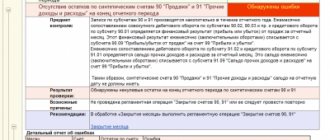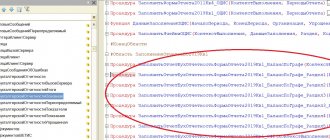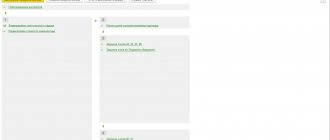Composition of general business expenses
Order of the Ministry of Finance No. 94n clearly establishes that account 26 in accounting is used to reflect general business expenses (OHR).
Such expenses of an enterprise include some types of expenses that cannot be attributed to the main production, but without which the implementation of the main activities would become impossible or problematic. The following types of costs are attributed to accounting account 26 (for dummies):
- Remuneration of management personnel, as well as taxes and insurance premiums accrued on the salaries of administrative and managerial personnel.
- Fixed assets, intangible assets, which are used to ensure the work of the enterprise administration. As well as depreciation charges for such property.
- Material supplies (stationery, fuels and lubricants, spare parts) that are purchased for management, ensuring the operation of the farm and the AUP.
- Payment of rental and leasing payments for property purchased directly for the needs of the company administration. For example, renting office space.
- Information, consulting, legal and other support services of third-party organizations and firms that are used in the company’s activities as auxiliary.
For exceptional types of activities, account 26 can include not only general business expenses, but also expenses for core activities. For example, the activities of brokerage companies. Such features should be described in detail in the accounting policies.
Scheme for accounting for direct costs in 1C - 20 and 23 accounts
Figure 1 schematically shows direct costs, i.e. those that can be attributed to specific products. These costs are written off to 20 (main production) and 23 (auxiliary) accounts.
By “cost” we can understand the wages of production workers, the cost of consumables, depreciation of equipment, and other types of costs. The main thing that unites such costs is that the products to which they relate are known in advance.
Fig.1
Different colors indicate products and costs with the same analytics. In 1C, these are item groups (and, possibly, divisions, if their use is configured). In order for the cost to “go” to the desired product, it must have the same analytics.
Within a product group, costs are distributed in proportion to the planned cost.
“Cost 10” (Fig. 1) will “hang” in the department, since its analytics do not coincide with any products. This is the main reason for errors when closing 20 accounts.
In this case, in the program after the month is closed, the cost calculation will look like this (Fig. 2):
Fig.2
As you can see, a line with zero cost appeared in the report, although there are both direct (“nuts”) and indirect costs (“labor”). There is no issue for this nomenclature group. To correct the error in closing account 20 in 1C Accounting, you need to check the costs for the “Footwear” item group.
For analysis, you can use the standard “Subconto Analysis” report (Fig. 3). Most likely, for the cost “Nuts” the “Main nomenclature group” should be selected, according to which “Nut butter” was produced.
Fig.3
Structure of OCR in the table
A complete list of expenses for general business needs with examples:
| Main categories | Compound | Examples |
| Administrative and management expenses | Salaries of management personnel, secretariat, accounting, personnel department and legal department. Insurance premiums and other charges on the earnings of the AUP. Representation expenses of the organization. Expenses for business trips and business trips. Payment for postal services, telephony, internet, communications, etc. Security services. | The official salary and bonus of the director of the organization, insurance premiums for the reporting month. Payment for postage stamps for sending business correspondence. |
| Repair and depreciation | Costs of an economic entity for the repair of non-production equipment. Depreciation charges for fixed assets and intangible assets not involved in the production cycle. | Repair of the CEO's company car. Depreciation for office premises of the AUP and accounting department. |
| Material support | Acquisition of inventory and intangible assets to meet general economic needs. | Purchasing computers for the secretary. Purchasing specialized software for accounting. |
| Rent | Payment of rent for AUP. | Calculations of monthly rental payments for the office of the organization's directorate. |
| Budget payments | Taxes, fees, contributions. | Payment of fiscal payments to the budget of the Russian Federation. |
| Other | Consulting, information, audit services. | Payment for external audit control. |
Closing account 44
Account 44 reflects sales expenses: advertising, delivery of goods to your warehouse, entertainment expenses. After the end of the month, the balance on this account may remain as part of normalized expenses - in tax accounting. To do this, the corresponding cost item must be selected in the receipt document:
The type of expense in the article should be – Standardized expenses:
For entertainment expenses, the cost type must be – Entertainment expenses:
In this case, at the end of the month, the calculation of the norm for inclusion in expenses will be carried out automatically (4% of labor costs).
Transport costs on account 44
If transport costs for delivering goods to your warehouse are taken into account on account 44, then the type of expense should be Transport costs:
Then, in accordance with the law, in 1C 8.3, transportation costs will be distributed in proportion to the balance of goods in the warehouse and written off at the time of sale of the goods in both accounting and tax accounting, and a balance will remain on account 44:
What methods are provided for distributing transportation costs in NU and BU are discussed in our video lesson:
Advertising expenses
In 1C 8.3, to automatically calculate the rate of 1% of revenue for advertising expenses:
type of flow rate is provided: Standardized:
Calculation of write-off of standardized expenses
The calculation of write-off of normalized expenses can be checked:
We look at the entertainment expenses in the help-calculation of normalized expenses:
Cumulative labor costs can be found in the Reports-Tax Accounting Registers section:
We check the calculation: RUB 437,647.91*4%=RUB 17,505.92:
Checking the write-off of advertising expenses:
Revenue from tax accounting from SALT according to 90.01 and 91.01:
Let's check the calculation (RUB 2,535,720.97 + RUB 4,938.19)*1%=RUB 25,406.59:
Checking the write-off of transportation costs:
This help will help you make a calculation:
The share is calculated using the average percentage formula:
In our case:
Let's check the calculation (0+880.76)/(39,312.10+586,987.31)=0.0014=0.14%:
For more details on how to check how the 1C 8.2 (8.3) program wrote off part of the transportation costs to the financial result for accounting and tax accounting, see our video lesson:
Features and characteristics of 26 accounts
General business expenses are subject to reflection on active accounting account 26. Debit turnover accumulates the cost of all expenses incurred, and credit turnover reflects the closure of account 26.
Account 26 is considered a transaction account. This means that this accounting account is not reflected in the annual balance sheet, or as part of other reporting forms. Consequently, the account at the end of the reporting period cannot have a closing balance. All turnover must be distributed to the appropriate accounting accounts.
The current standards of PBU require the organization of analytical accounting for account 26. Provide detail in the context of cost items, according to the approved cost estimate. Conduct additional analytics by structural divisions - places where costs arise, by intended purposes and other accounting features.
IMPORTANT!
Account 26 cannot have a final balance at the end of the reporting period. This means that the account is subject to monthly closure.
Postings for recording general business expenses
All typical accounting entries for accounting are collected in the table:
| Operation description | Debit | Credit |
| Depreciation was accrued for fixed assets and intangible assets used for the administration of the enterprise | 26 | 02 - fixed assets 05 - intangible assets |
| Salaries and insurance contributions were accrued to the director of the organization and his deputies | 70 - salary 69 – contributions | |
| Materials, equipment, special clothing and personal protective equipment used in work for general business needs of the company have been written off. | 10 | |
| Part of the finished products is sent for chemical and chemical work | 43 | |
| Services of third-party organizations are included in the OCR | 60 76 | |
| The deviation in the cost of written-off materials and raw materials for industrial maintenance is reflected | 16 | |
| Semi-finished products are assigned to our own general facilities. company needs | 21 | |
| Part of the costs of main production (goods, works, services) is written off for own needs | 20 | |
| Auxiliary production costs are written off for maintenance | 23 | |
| Costs of servicing production shops are allocated to administrative needs | 29 | |
| Shortages and thefts were written off without identifying the perpetrators. Except for natural disasters | 94 | |
| OHR are included in the reserve for future expenses and payments | 96 | |
| The share of deferred costs is allocated to maintenance and repair | 97 |
Account characteristics
Account 26 are used in company accounting to display information about general business costs, i.e. funds aimed at meeting administrative needs:
- information, advertising, consulting services, work of auditors;
- telephone communications for employees, Internet, programs;
- rent for general utility premises;
- maintenance of fixed assets for non-production purposes;
- provision of personnel not related to production (enterprise administration work, calculation of insurance premiums, purchase of office supplies for office workers, etc.).
Organizations that are not engaged in production (agents, brokers, etc.) can display the costs of supporting activities on the account.
By the way. Trading companies display such expenses on their accounts. 44 and 26 are not used.
Analysis of information on this account. allows you to build a competent management policy and reduce company costs. Analytical monitoring is carried out by company divisions and individual cost items.
Account 26 is active, debit account. – expenses incurred, for example, insurance premiums from wages, on an account loan. – write-off of costs and closure.
Closing an account and writing off expenses in accounting
It is important to understand how account 26 is closed and what transactions are made. Writing off expenses, that is, closing account 26, is done in several ways:
- Costs are included in the cost of production using production accounts. The method can be used in the production of products.
- Costs are charged to cost of sales. For example, if an economic entity provides services or performs work.
- Expenses are written off as current expenses of the reporting period using the direct costing system.
It is not enough to simply choose a method for writing off OCR. The choice and distribution standards must be fixed in the accounting policies. And the chosen method must be justified.
Typical transactions on how to close account 26:
| Operation | Debit | Credit | Note |
| Write-off reflected at actual cost | 20 23 29 | 26 | If the production activities of an enterprise include auxiliary and service production (shops), then costs should be distributed between the corresponding accounting accounts. Provide information about the distribution method in your accounting policies. |
| Reflected write-off using the direct costing system | 90-2 | 26 | If a company uses the method of forming a reduced cost, or direct costing, then the cost and equipment are written off immediately to the account. 90-2 “Cost of sales”. Fix this decision, how and to what account account 26 is closed, in the accounting policy. |
Closing accounts 25, 26
Account 25 is used for costs that need to be distributed to the cost price, but cannot be attributed to any one item group:
The procedure for closing account 25 is determined in the Accounting Policy on the Costs tab:
Here you can set the required number of rules for distributing accounts 25 and 26, and also indicate the date from which this rule will be used:
Read the following article for ways to solve the problem of closing account 25.
Account 26 is intended for accounting for general business expenses. In the Accounting Policy, you can choose one of two ways to close it:
- Direct costing – count 90;
- In cost of sales.
In the second case, the rules for distribution to cost are set similarly to account 25. If in 1C 8.3 the rules are set incorrectly or the conditions for closing accounts are not met, a balance will remain on them, which according to the accounting methodology should not exist. On account 26 in tax accounting, a balance is allowed for standardized expenses.
Errors when closing accounts 25 and 26
Errors when closing accounts 25 and 26 in 1C 8.3 and 8.2, if the direct costing method is not chosen, are usually due to the fact that the costs being written off are not directly attributable to some type of activity. Account data should be distributed proportionally to the base, which in 1C 8.3 we independently set in the settings.
Let’s say that this indicator is not included in the accounting for a given month. For example, with a given distribution proportional to revenue, there is no revenue:
It happens that distribution methods are not specified at all, then the 1C 8.3 program will report this:
In the methods, you need to specify the distribution base, and you can also specify the direct cost account to which you need to write off general production and general business expenses:
That is, when account balances arise, you need to analyze the specified conditions for closing. There are several ways to correct the situation:
- Change the conditions - rewrite the accounting policy if the rule is set incorrectly;
- Artificially create the required conditions for closing - reflect revenue, etc.;
- Closing the account manually is the most extreme option.
For more details on how to close accounts 20 and 25 at the end of the month in 1C 8.3, see our video lesson:
Accounting example for account 26
Let's look at the rules for closing account 26 using an example. NPO “Good Day” produces scissors and rulers. Products are produced at planned cost. In the organization, it is customary to reflect the main costs on account 20, and reflect indirect costs on account 26.
The accounting policy of the NPO “Good Day” reflects:
- General business expenses are written off to the cost of production;
- distribution of costs between types of products should be made according to the volume of material costs.
In March 2021, direct production costs amounted to 220,000 rubles:
- for the production of scissors - 150,000 rubles, including material costs - 80,000 rubles;
- for the production of rulers - 70,000 rubles, including material costs - 40,000 rubles.
Structure of indirect expenses—RUB 140,200:
- salary of management personnel - 100,000 rubles;
- insurance premiums - 30,200 rubles;
- rental of premises - 10,000 rubles.
1. We distribute indirect costs according to the volume of material costs using the formula:
Amount of indirect expenses for the production of scissors: 140,200 × 80,000 / 120,000 = 93,467 rubles.
The amount of indirect costs for the production of rulers: 140,200 × 40,000 / 120,000 = 46,733 rubles.
2. Close account 26, distributing indirect costs:
| Operation | Debit | Credit | Sum |
| Indirect costs for the production of scissors were written off | 20 | 26 | 93 467 |
| Indirect costs for the production of lines are written off to the main production | 20 | 26 | 46 733 |
Correcting errors in accounting
The use of automated accounting greatly simplifies accounting. Errors are not uncommon in specialized accounting programs. Why account 26 is not closed:
- Check the accounting policy settings in the software product. Follow the prompts that the program gives, or contact the developers.
- Check that transactions are recorded correctly in the special program. In most cases, errors lie in misgrading (for example, an accountant made a mistake in the details or nomenclature).
- Check the dates of registration of transactions. For example, in the 1C software, the dates of registration of a business transaction play a key role in the formation of accounting data.
To avoid mistakes, systematically create the turnover sheet and check the accounting card 26.
Unfinished production
Accounts 20, 23, 29 may have a balance in the amount of work in progress. Each enterprise chooses a methodology for assessing work in progress independently and enshrines it in its accounting policies. The 1C 8.3 program provides for this the document WIP Inventory:
The document is created for each cost account separately, broken down by item groups. Accounting and tax accounting amounts are calculated and entered manually:
The document does not generate postings; it only serves to ensure that at the end of the period there remains a balance in the accounts in the specified amount:







